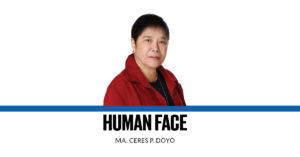Filipinos belong to the Malay race that descended from the seafaring Austronesian migrants who populated the Philippines, Indonesia, Malaysia, Brunei, and the Pacific Islands between 5,000 and 1,500 BCE. The exception is the tiny population of Aeta who preceded the Austronesians in the Philippines. Filipinos are almost wholly a homogenous people, with the same DNA that can be traced back to the Austronesians. Filipinos are indigenous people of the Philippines since they can genetically trace back their ancestry to the ancient Austronesian migrants.While Spain colonized the Philippines for over three centuries, there were no foreign settlers who supplanted the original Filipino population that existed at the time of the Spanish conquest. This is very unlike Canada, the United States, New Zealand, and Australia, where the original inhabitants became the minority and the white foreign settlers from Europe became the majority. In these countries, there are so-called First Nations or indigenous people who preceded the arrival of the foreign settlers.
The Indigenous Peoples’ Rights Act of 1997 (Ipra), however, has defined “indigenous people” of the Philippines to exclude the vast majority of Filipinos. Only those Filipinos “who have, through resistance to political, social and cultural inroads of colonization, non-indigenous religions and cultures, became historically differentiated from the majority of Filipinos” are indigenous people of the Philippines. By legislative fiat, the vast majority of Filipinos are no longer indigenous people of the Philippines even if their ancestors did not come from Europe, Africa, or Mars. As non-indigenous to the Philippines, they cannot claim any ancestral domain under the Ipra.
The Ipra, however, states that “indigenous people” of the Philippines “include peoples who are regarded as indigenous on account of their descent from the populations which inhabited the country, at the time of conquest or colonization, xxx who retain some or all of their own social, economic, cultural and political institutions, but who may have been displaced from their traditional domains or who may have resettled outside their ancestral domains.”
The vast majority of Filipinos can trace back “their descent from the populations which inhabited the country, at the time of conquest or colonization” even as they “have resettled outside their ancestral domains” while retaining their own social or cultural roots. This is because the vast majority of Filipinos today are descended from the Malays who inhabited the Philippines at the time of the Spanish conquest. The Ipra is inherently and glaringly inconsistent: It speaks of the “majority of Filipinos” as not “indigenous people,” but admits as indigenous people Filipinos who can trace back “their descent” from those who inhabited the Philippines upon the Spanish conquest — referring to the vast majority of Filipinos today.
This concept of “indigenous people” in the Ipra is an idea that is needlessly dividing the Filipino people without historical or ethnic basis. This is an alien idea, imported from countries where the European settlers became the majority in the colonized countries, which has no application in the Philippines. This is an idea that can even create false entitlements.
In the 2008 case of Province of North Cotabato v. Government of the Republic of the Philippines, the Supreme Court declared unconstitutional the Memorandum of Agreement on Ancestral Domain (MOA-AD) that was negotiated by the Arroyo administration with the Moro Islamic Liberation Front. In my Separate Concurring Opinion, I wrote:
“The MOA-AD likewise contains a glaring historical inaccuracy. The MOA-AD declares the Bangsamoro as the single ‘First Nation.’ The term ‘First Nations’ originated in Canada. The term refers to indigenous peoples of a territory, with the assumption that there are one or more subsequent nations or ethnic groups, different from the indigenous peoples, that settled on the same territory. Thus, in Canada, the United States, Australia and New Zealand, the white Europeans settlers are the subsequent nations belonging to a different ethnic group that conquered the indigenous peoples. xxx In Mindanao, the Lumads who kept their indigenous beliefs, as well as those who centuries later converted to either Islam or Christianity, belong to the same ethnic Malay race. Even the settlers from Luzon and Visayas belong to the same ethnic Malay race. xxx.”
Thankfully, the Organic Law for the Bangsamoro (Republic Act No. 11054) that was signed into law on July 27, 2018, deleted any reference to the Bangsamoro as the “First Nation.”
acarpio@inquirer.com.ph


